Classifying of Matter Teaching Resources
Teach students how to classify matter as pure substances or mixtures with engaging activities aligned with the NGSS curriculum.
This collection of printable and digital worksheets, experiments and activities was created by the teachers of the Teach Starter team to save you time on your lesson plans. That means you'll find resources already carefully reviewed by an expert teacher, plus editable options so you can make the adjustments you need to meet your students' needs.
Need some help with your lesson plans? Read on for a guide from our teacher team, including handy definitions of pure substances and mixtures to share with your students.
How Is Matter Classified?
Before you can dive into actually classifying matter, it helps to explain to students what it actually means to classify matter. Here's a helpful explanation from our teacher team that you can use with your class:
Classifying matter is how we organise different types of matter using its properties or characteristics to help us separate the types into different groupings.
We can classify all the matter around us into just two separate types:
- Pure substances
- Mixtures
What Is a Pure Substance? A Kid-Friendly Definition
Let's break down pure substances in a way your science classes can understand, shall we?
A pure substance has the following characteristics that help us with classification:
- It is made up of only one type of matter.
- It cannot be separated into other substances by physical means.
Pure substance can be broken down into two categories:
- Elements — These are substances made up of just one kind of atom and cannot be broken down or transformed by a chemical reaction. For example, helium is an element that we classify as a pure substance.
- Compounds — A compound is made up of two or more elements that have bonded together to form one. These elements are chemically bonded together and cannot be separated. Water is a compound that we classify as a pure substance as its elements — hydrogen and oxygen — are bonded together.
What Is a Mixture? A Kid-Friendly Definition
If a pure substance is comprised of just one type of matter and cannot be broken down, it might not surprise your students to hear that mixtures have the opposite characteristics.
A mixture:
- Is made up of two or more different types of matter
- Can be separated by physical means
A kid-friendly example of a mixture is a bowl of milk and cereal. There are two different types of matter in the bowl, and you can separate the two types (although it might get messy!).
- Plus Plan

Characteristics of Matter Graphic Organizer
Use a Characteristics of Matter Graphic Organizer to explore and classify examples of matter in your upper-grade science classes.
- Free Plan
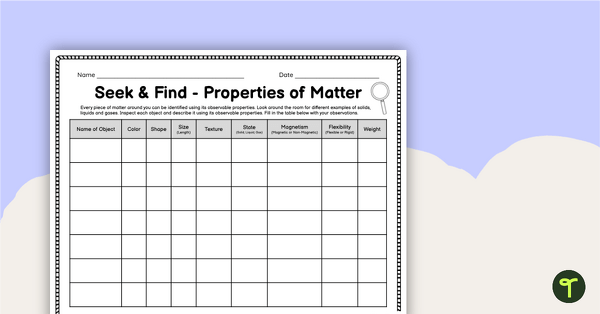
5th Grade Matter Properties Worksheet - Scavenger Hunt
Explore the observable properties of matter in the classroom environment with a Matter Properties Worksheet and activity for 5th grade.
- Plus Plan

Solutions and Mixtures - Science PowerPoint
Explore solutions & mixtures with an engaging Classifying Matter Teaching Slide Deck.
- Plus Plan
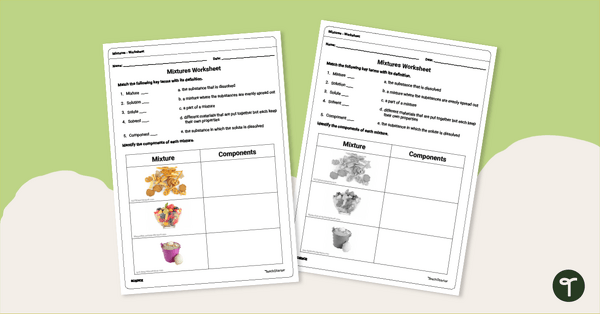
Mixtures Worksheet
Practice identifying mixtures and their components with a printable Mixtures Worksheet.
- Plus Plan
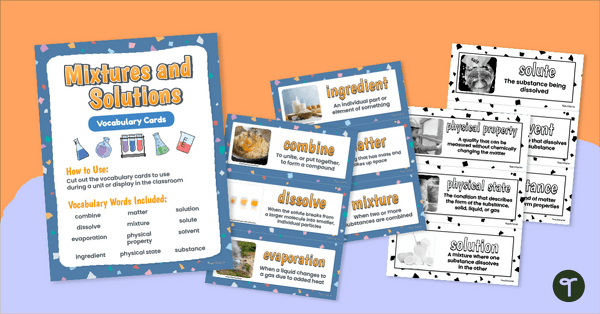
Mixtures & Solutions – Vocabulary Cards
Reinforce science vocabulary in your classroom with this set of word wall cards that focus on mixtures and solutions.
- Free Plan
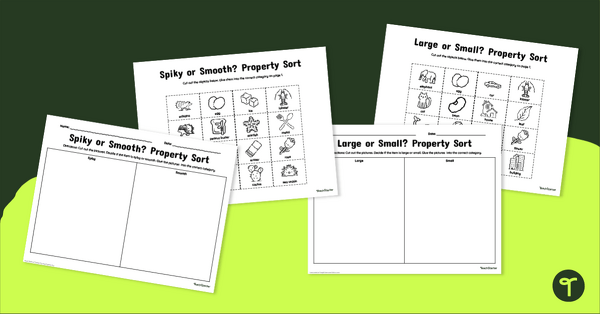
Observable Properties of Matter Cut and Paste Worksheets
Practice sorting objects based on observable properties with a pair of printable cut and paste worksheets.
- Plus Plan

Observing Properties of Matter Teaching Slides
Teach your students about matter and its properties with an engaging interactive slide deck.
- Plus Plan
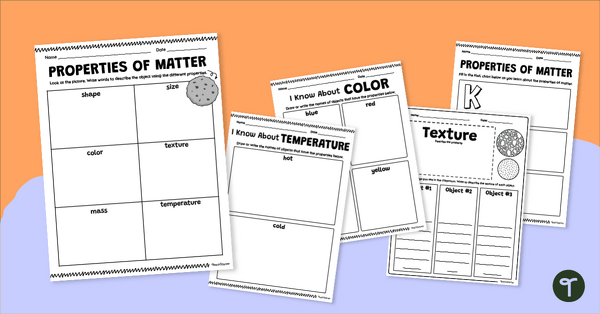
Properties of Matter Graphic Organizer Pack
Use printable graphic organizers to help your students record what they have learned about the different properties of matter.
- Plus Plan
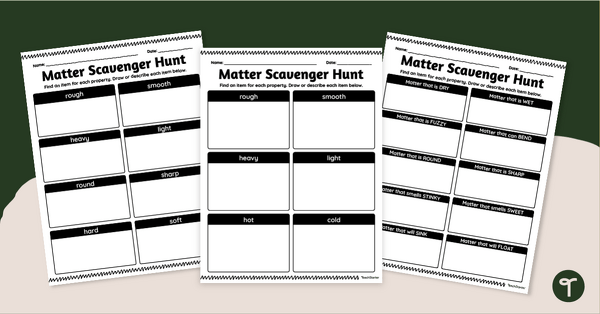
Observing Matter Activities - Differentiated Scavenger Hunts
Host an engaging science scavenger hunt to introduce your primary students to the observable properties of matter.
- Free Plan
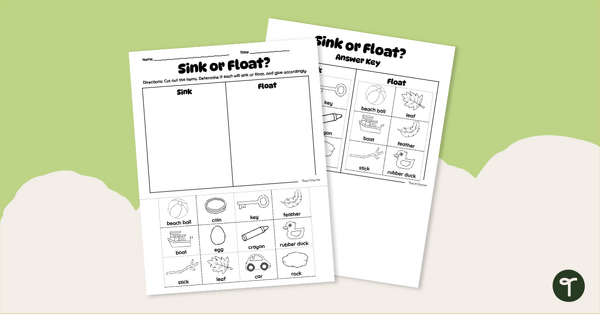
Sink or Float Worksheet - Kindergarten Science Worksheet
Identify objects that sink and float with a printable Sink or Float worksheet for Kindergarten.
- Plus Plan
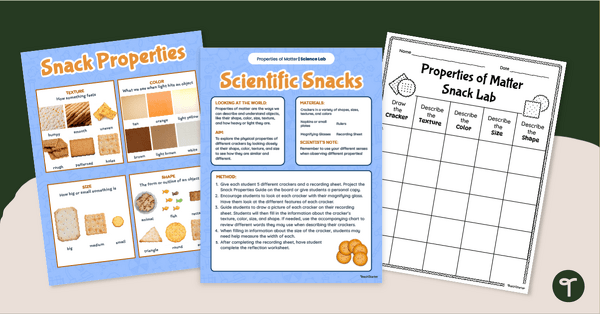
Observing Matter – Edible Science Experiment
Discover the observable properties of matter with an exciting edible science experiment!
- Plus Plan
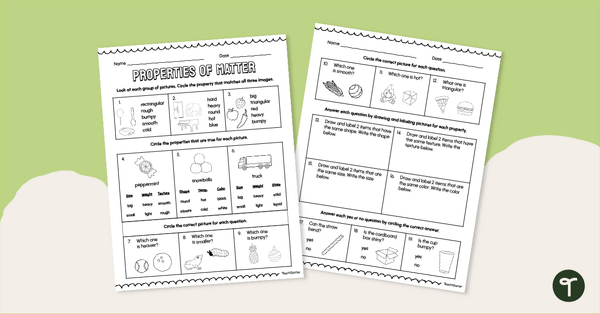
Observing Properties of Matter Quiz - 2nd Grade
Assess students’ knowledge of basic observable properties of matter with a printable 2nd grade Properties of Matter quiz.
- Plus Plan
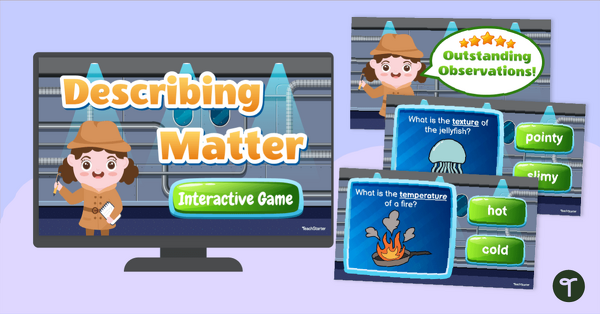
Describing Matter Interactive Game (Properties of Matter)
Practice describing matter with an engaging science game for primary grade students.
- Plus Plan
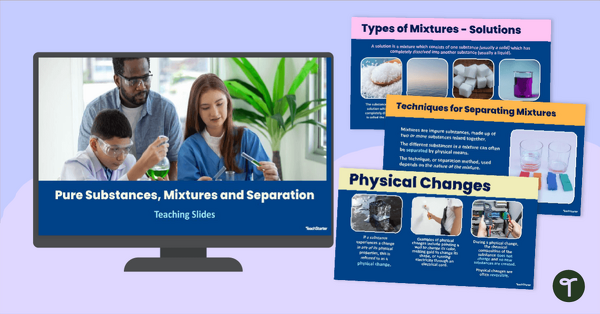
Pure Substances, Mixtures and Separation Techniques Teaching Slides
Teach a chemistry unit on pure substances, mixtures and techniques for separating mixtures with an engaging interactive teaching slide deck.
- Plus Plan
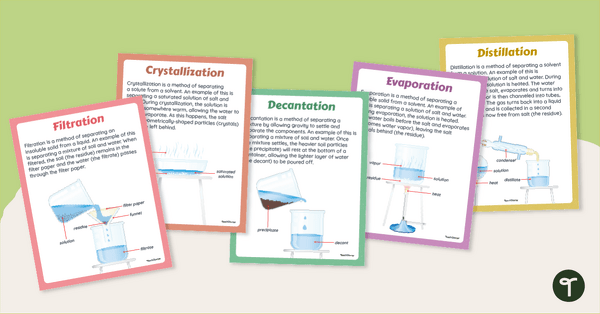
Methods for Separation of Mixtures Poster Pack
Identify common methods for separation of mixtures with our Separation Techniques Chemistry posters.
- Plus Plan
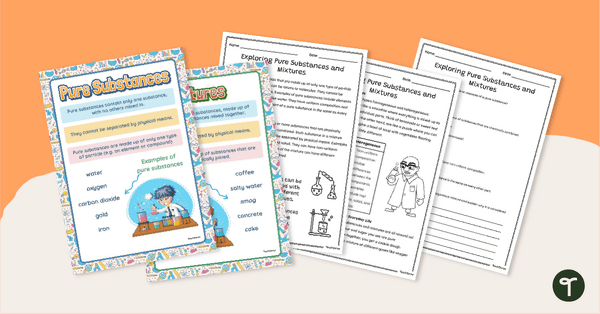
What Are Pure Substances and Mixtures? (Classroom Pack)
Explore pure substances and mixtures with a printable classroom pack that includes posters and comprehension worksheets.
- Plus Plan

Physical Properties of Metals – Teaching Slides for 6th Grade
Explore and learn about different properties of metals such as luster, ductility, conductivity and malleability with this set of teaching slides.
- Plus Plan
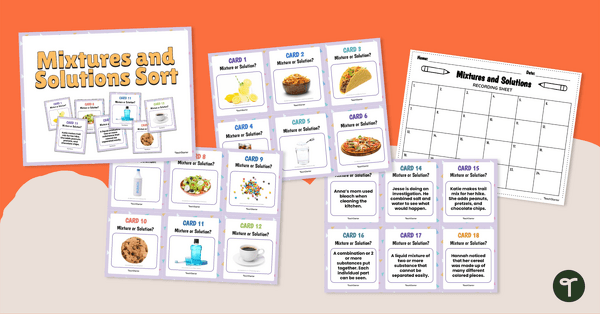
Mixtures and Solutions Sort
Distinguish between mixtures and solutions with this 24-card sorting activity.
- Plus Plan
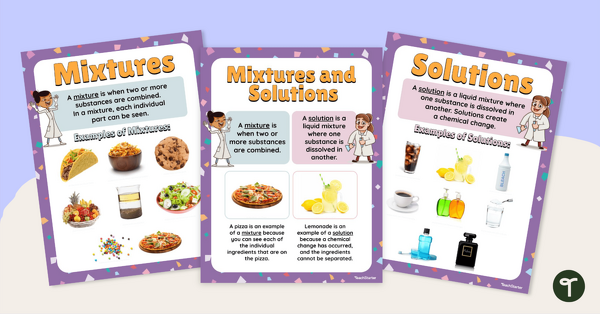
Mixture and Solution Anchor Chart Pack
Display information about mixtures and solutions with this set of science posters.
- Plus Plan
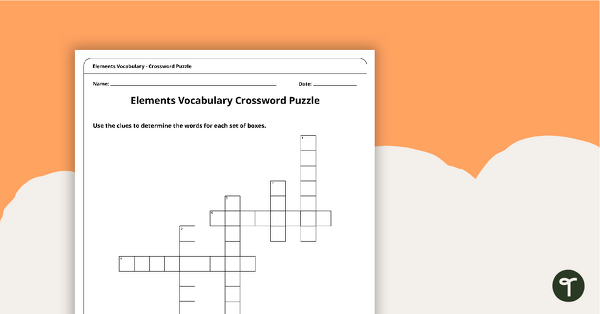
Elements Vocabulary - Crossword Puzzle
A crossword puzzle to practice terms associated with elements.
- Plus Plan

Pure Substances and Mixtures - Teaching Resource Pack
A collection of teaching resources to use when teaching a chemistry unit on pure substances, mixtures and separating techniques.
-

Water Experiments for Kids That Are a Big Hit in the Classroom
Teach kids about density, refraction of light, and more with these fun water experiments for kids that are easy to create in the classroom.